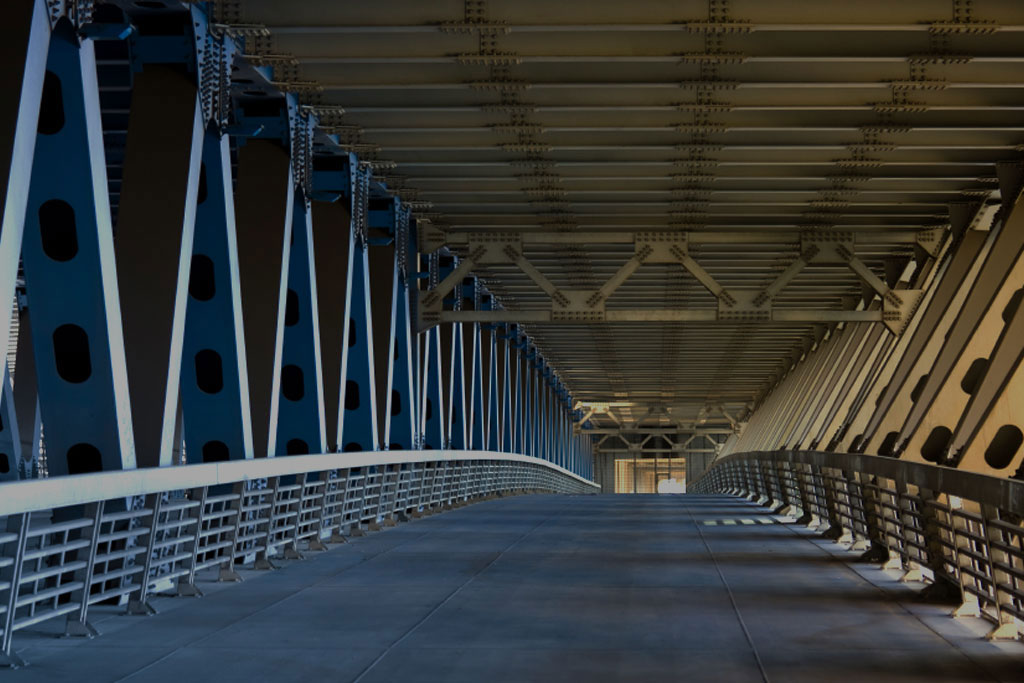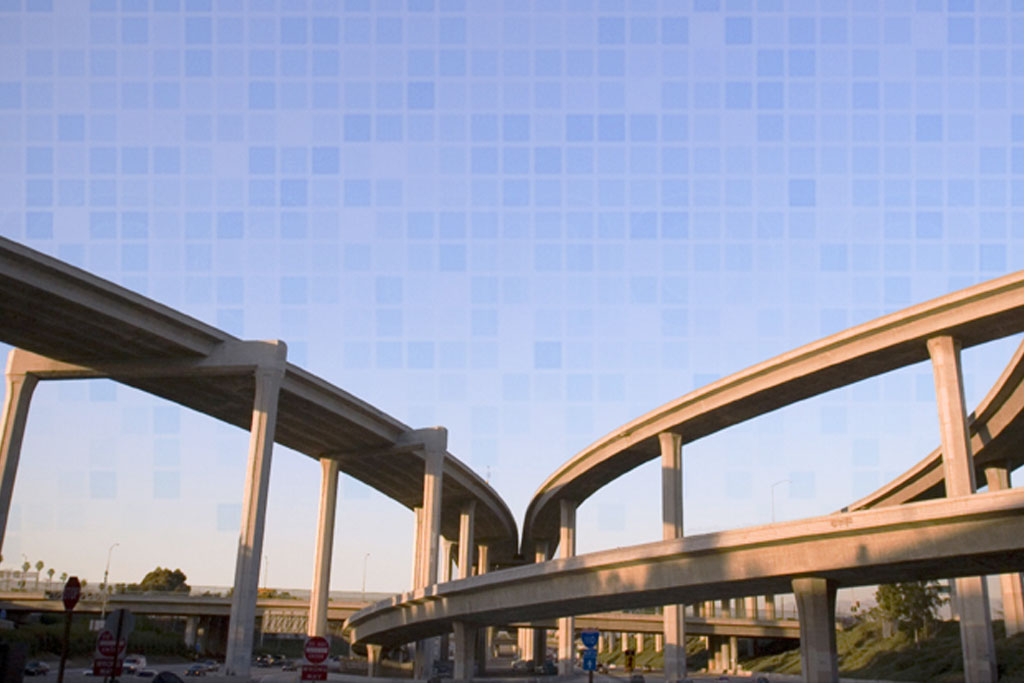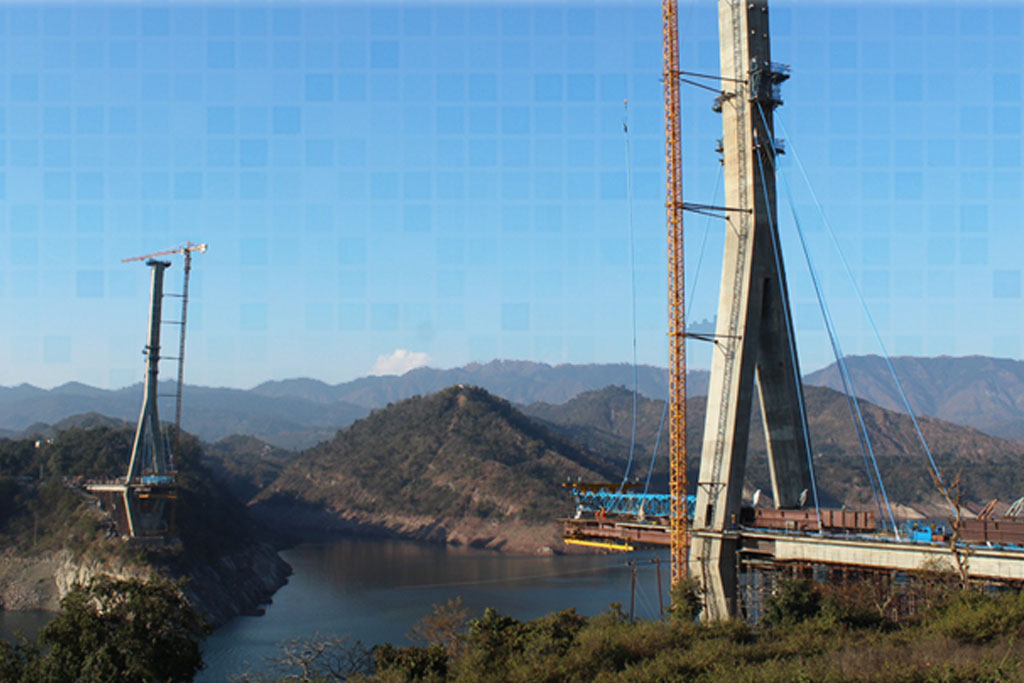Unique Solutions in an Intuitive Environment
From concept to creation, every 3D FE model generated by the Steel Bridge Module brings with it decades of knowledge gained from working with top level engineers across the United States. From simple line girder projects to complex bridges featuring concentric girders with irregular spacing and variable deck width, the Steel Bridge Module provides the complete solution for steel girder bridges through its integration with LARSA 4D.
AASHTO Compliant Code Check & Load Rating
After an analysis is performed, the Steel Bridge Module extracts results and automatically processes them to perform LRFD compliant code checks for strength, serviceability, fatigue, constructability, optional live load deflection, and cross-frames and substringers. The module reports results in four code check reports, which vary from a simple "pass/fail" report to a detailed report outlining the equations used in the check. Using the influence-surface based analysis for live load to perform Load Rating, the Steel Bridge Module provides the flexibility to rate any 2D or permit vehicle.
Complex Curvature Alignment
By entering basic parameters such as span length, number of girders, cross-frame locations, and deck dimensions, the Steel Bridge Module simplifies the design of bridges featuring special conditions, such as curved-flared girder layouts, super-elevation, vertical curve, variable deck width and concentric girder with uneven spacing.
Flexible Modeling Options
To more accurately capture the extraction of lateral bending moment, girders can be modeled as line elements representing the web and flanges together, or as a composition of plate and shell elements for the web and line elements for the flanges. I-Girder, Box-Girder, and Tub-Girder bridges are supported.
LARSA 4D Steel Bridge Module Features Video
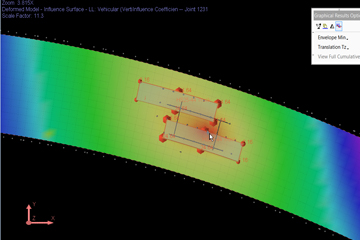
Influence Surface Based Live Load
LARSA's 4D Steel Bridge Module provides the ability to move beyond typical grillage analysis to utilize 3D influence surface based live load analysis. With an influence surface computed for the entire deck surface, LARSA 4D automatically finds the transverse location of as many lanes as will fit on the surface. This saves the user the time of choosing lane locations, modeling separate influence lines, and forming factored combinations.

Advanced Staged Construction
LARSA 4D's staged construction analysis stands out among its peers. Using LARSA 4D's analysis engine, all 3D and torsional effects as well as the locked-in forces of the construction sequence are fully considered. For steel girder bridges this includes the deck pouring sequence, screed movement, erection sequence of girders and cross-frames, time-dependent material effects, and as a 3D analysis captures other structural behaviors that a 2D grillage analysis cannot.
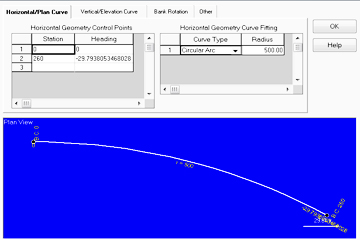
Geometry Control
The Steel Bridge Module supports a variety of features allowing skew angles and support conditions for each abutment and pier, starting and ending girders at any point along the bridge, cross-slope, splice-points, cross-frames, lateral bracing, substringers, and modeling hybrid girders. With LARSA’s Bridge Path Coordinate System the user can create multiple bridge paths in the same file to define girders, spiral-on-and-off ramps and ground level footings.
As an integral part of the LARSA 4D BRIDGE Series, the Steel Bridge Module is included in the following packages of LARSA 4D.


